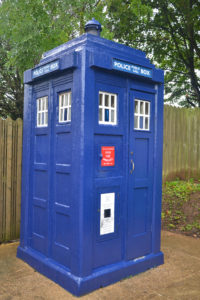
Crafting a fictional world is no easy task. To infuse these realms with realism, one must consider every aspect of their inhabitants’ daily lives, from commerce to relationships to religion. Just as humans throughout history have constructed intricate belief systems, world-builders have crafted entire religions that take on lives of their own. However, these fictional faiths do share many characteristics with basic tenets existing in real-life religions.
Reincarnation in Mass Effect and Doctor Who
Reincarnation is a concept common to many non-Christian faiths. Although the specifics differ in each of their theologies, the basic idea is that an individual is reborn into another body after death. The spiritual version of this philosophy has recently emerged in the Mass Effect video game universe. The 2017 release of “Mass Effect: Andromeda” introduced a new race, the cat-like angara who are native to the Andromeda galaxy. While the angara have many religions, a central shared belief among them is that their souls reincarnate upon death. Moreover, angara traditions hold that every person is reborn as a new member of their original family.
In contrast, the Gallifreyan Time Lords of the Doctor Who universe undergo a physical process known as regeneration. The concept was debuted in 1966 with the exit of William Hartnell, the actor who originally portrayed the Doctor, to explain the entrance of his replacement Patrick Troughton. Instead of a spiritual rebirth, regeneration transforms a Time Lord’s body into a new corporeal version. New physical traits, personality aspects, preferences and even a change of gender are all possible outcomes from the regeneration process.
Monotheism and Salvation in the Dragon Age Universe
The Andrastian fictional faith is a major component of the Dragon Age video games universe. This religion draws many parallels to Christianity in our world, including the presence of a singular male deity, a prophet to spread his messages and the emphasis on salvation through conversion. Dragon Age Andrastians worship the Maker and revere his primary messenger, a woman known as Andraste. Additionally, they follow the Chant of Light, a scripture that contains the faith’s major doctrines. Andrastianism holds that human sin caused the Maker to turn away from his creation, but this can be rectified through seeking forgiveness and spreading the Chant to the entire realm. The Chantry, the major religious organization in the Dragon Age universe, bears similarities in hierarchal structure and operation to the Catholic Church.
Polytheism and Divine Guidance: Star Trek’s Bajoran Faith
Although Star Trek’s creator, Gene Roddenberry, embraced humanism and rejected organized religion, later shows in the series depicted unique belief systems and issues surrounding faith. The third serial, “Deep Space Nine,” introduced and explored the religious beliefs of the Bajorans, a humanoid race with members serving alongside Starfleet crew aboard the Deep Space 9 station. Bajorans revere the Prophets, a collective of alien beings existing outside linear space and time. Said to provide divine guidance, the Prophets welcome those who follow their will into their Celestial Temple after death. In a 2012 article in Transpositions, writer Cole Matson explained how these Prophets reflected some of the core values of the Star Trek series: freedom of mind, body and spirit. Interestingly enough, a Messiah-like figure is also present in the Bajoran religion: the Emissary to the Prophets, later discovered to be Deep Space 9’s station commander Benjamin Sisko.
Art Continues To Imitate Life
The realism and richness present in fictional worlds are what draw readers, viewers and players into their wonderful complexities. Like human beings in real life, characters in imaginary realms are also depicted explaining the universes around them and searching for meaning. Whether to illustrate real-world principles or to help weave their stories, analogies to beliefs from our own reality often take new forms in our fictional faith.

